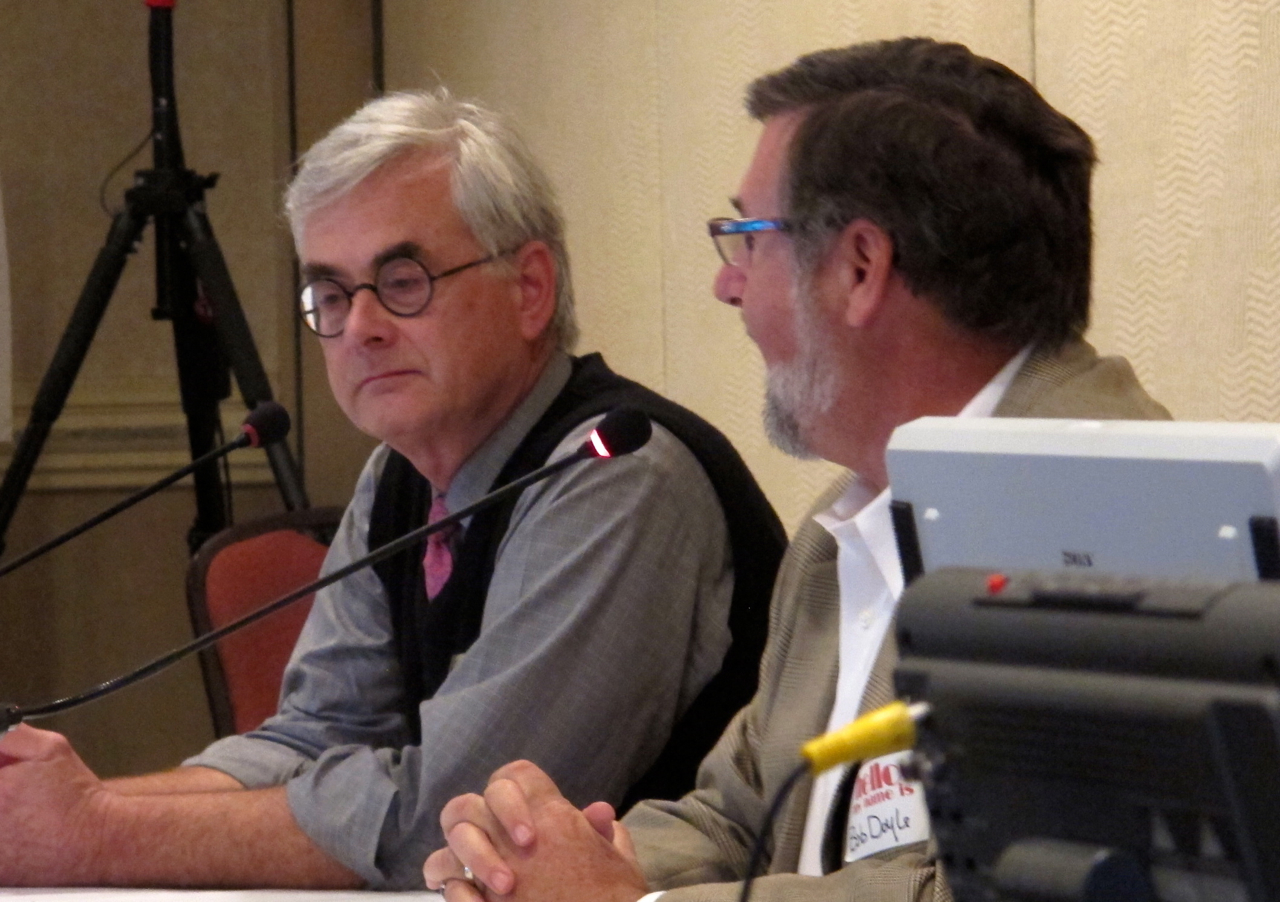On October 2nd, an overflow crowd of stakeholders, including representatives of nonprofit organizations and park user groups, converged on a hotel conference room in San Rafael to discuss the future of California’s State Parks.
In a workshop held by the State Park and Recreation Commission and the Parks Forward Initiative, the public was invited to suggest ideas and recommendations on the future of state parks. Speakers were asked to focus their comment on ideas for efficiency, financial sustainability, and leveraging partnerships.
The Parks Forward Initiative was created earlier this year in response to the 2011 state budget crisis, which led to a proposal to close over 70 state parks due to sharply reduced appropriations. While the immediate crisis was averted due to strong public outcry, state officials realized that “business as usual” would no longer be possible for the parks. The Parks Forward Initiative, which is supported by funds from several private foundations, is charged with coming up with recommendations for ensuring the future sustainability of the park system.
The Parks Forward advisory board consists of 13 independent citizens selected by the state Secretary of Natural Resources. The board will hold a total of ten public workshops around the state, with San Rafael being the fifth to have occurred. The upcoming meetings will be held in southern California.

“This is just the beginning of the project,” said Ken Wiseman, the Executive Director of the Parks Forward Initiative.
“We’re going to have hundreds of great ideas and the commission is going to have to get those down to five or so.”
Unfolding as a series of panel presentations followed by public comment, the meeting began with a discussion of the crux of the issue—creating sustainable funding for state parks.
Virtually all of the speakers agreed on the need for a stable source of public funding to support state parks.
“Citizens should pay sufficient taxes to support basic public services and institutions,” said Ronald Miska, Deputy Director of Marin County Parks and a speaker on the financial sustainability panel. “These institutions should not have to survive on bake sales and the whimsy of philanthropy—they are not enterprises that can just fold and go away.”
The essential prerequisite of guaranteed funding, echoed by many, was the simultaneous need for structural change and increased transparency in state parks.
“There needs to be a serious study of structural reforms at our state parks so that the public is convinced they’re getting value for money,” said Philip Sales, President of the Sonoma/Petaluma State Historic Park Association. “So any side of this that’s talking about increased funding but is not addressing structural changes or doing business in a different way, is going to fail.”
A new idea came from Alyssa Ravasio, founder of the California camping website Hipcamp, who urged the commission to “think like a startup” in terms of implementing new ideas.
“I don’t think the answer is charging more, I think it’s charging less in some cases,” said Ravasio. “For example, in Orange County they have reduced fees to hourly and were able to increase visitation and revenue.”

On the topic of partnerships, there was a strong focus on the need to create mutually beneficial and cooperative partnerships among California’s state parks and nonprofit partners. Representatives from the federal Golden Gate National Recreation Area and the nonprofit Golden Gate National Parks Conservancy described their productive partnership, which involves the sharing of resources and funds.
Dino Beltran, representing the Koi Nation of southeastern Pomo, raised a different aspect of this discussion by commenting on the importance of developing partnerships between Native American peoples and state parks.
“We’ve been very fortunate so far as we’ve had an emerging relationship with the state parks department by way of Anderson Marsh Historic State Park and other partnerships are coming along from that,” said Beltran. “We would like to put boots on the ground in a volunteer effort and support the state parks.”
In the final discussion, focused on the way state parks can meet the needs of Californians, many suggestions centered on the need for parks to cater to an increasingly diverse and urban population. Others proposed that state parks need to better address the needs of diverse user groups such as foragers and mountain bikers.

Rue Mapp, the founder and CEO of Outdoor Afro, an organization that reconnects African- American communities with natural open spaces, spoke of how state parks could adopt social media and online tools to reach a range of audiences.
“I can’t emphasise enough about using the media to get the word out about our public assets and reach people we want to reach, especially those who aren’t already engaged with our parks” said Mapp. “We are really trying to shift the visual representation of who gets out into our parks. If people see images of themselves out there—it’s an invitation.”
In his panel presentation on the financial sustainability of state parks, Bob Doyle, General Manager of the East Bay Regional Parks District, commented that California’s biggest success has been its ability to preserve such a significant amount of public open space. Now it is California’s challenge to ensure the continued preservation and appreciation of this land, well into the future.
Public comments will be synthesized into a report that the Parks Forward Commission will consider and incorporate into its final plan which will be delivered to the Natural Resources Agency in August 2014.
Bay Area residents are encouraged to submit comments via the Parks Forward website, its Facebook Page and via Twitter @ParksForward.





